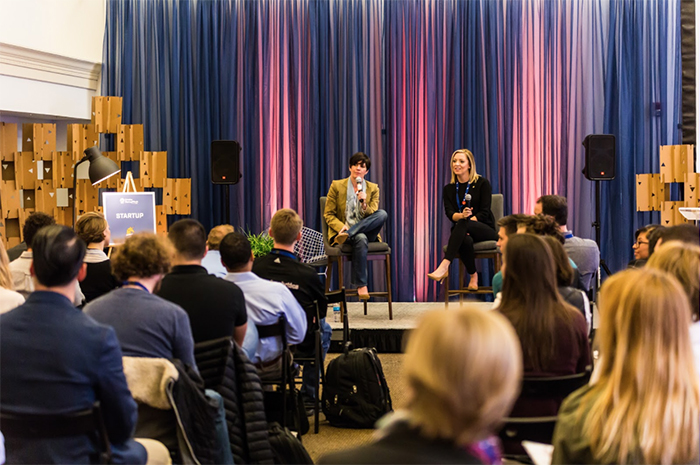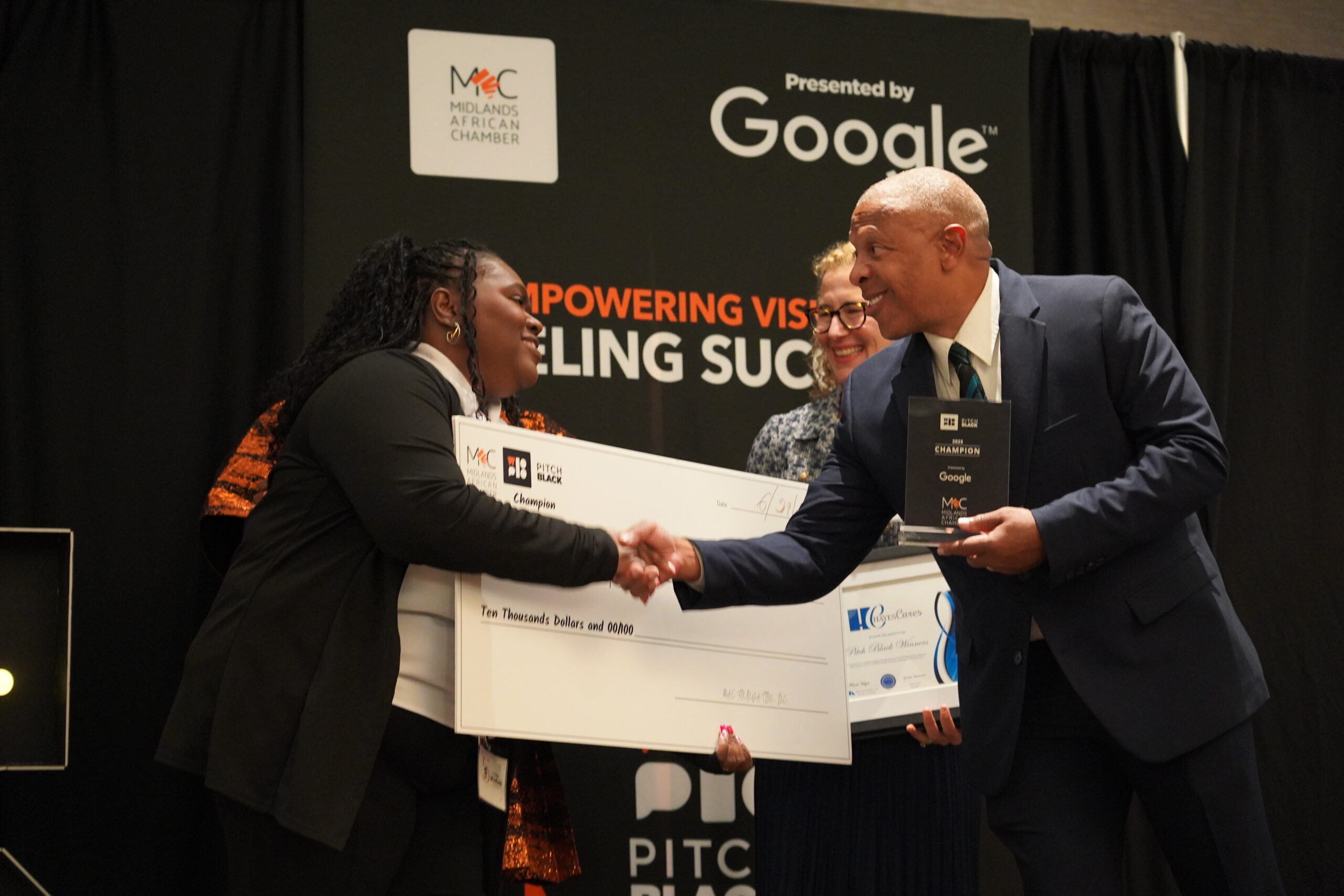This is the third installment of a multi-part series authored by The Startup Collaborative cofounding team: The Death (or Evolution) of Startup Accelerators and Incubators as We Know Them!
––
Your startup’s story IS your startup’s strategy, at least according to Ben Horowitz. We tend to agree at The Startup Collaborative. Casting a vision, clearly defining your value and speaking the language of your customer can be the difference between success and failure.
This Goes Way Beyond Demo Day
Let me preface this by saying, I fully anticipate to feel the wake from eye rolls of past Straight Shot founders like Josh Davis (Viirt) and Krystal Stubbendeck (Borrow For Your Bump) who let me hound and hound them on their Demo Day pitches in our early years.
In nearly every accelerator, the absorbent focus on Demo Day pitches is almost a complete distraction from the messages a founder should be focused on crafting — those for their customers!
From our vantage point, if you’re about to rapidly accelerate growth, shouldn’t you be on stage shouting from the rooftops to a packed theatre of your customers at the beginning instead of the end of a program? Now, that’s making the assumption that all accelerator teams have actually done the work to prove product-market fit in order to rapidly accelerate.
Founders, this is your job!
How you position your product — especially in the earliest days — can bring others along or push them farther away. From customers to early hires, to investors — they are looking to you, Founder, for a vision!
And, if we’re all being honest, we’re selling hope in the early days. Eventually your full product will back it up, but for now, sell your vision as if it were the silver bullet for your industry.
What do you want to be BEST known for? I am guessing it isn’t all the product features or commodities that your competitors are slinging too…
Messaging is an Indication of Product-Market Fit
We encourage our founders to establish their initial messaging following several customer discovery interviews, particularly after the problem has been validated. Your messaging is the bedrock in which your value propositions rest upon.
Your value prop is defined as you uncover the Pains and Gains your customer experiences in their day-to-day role, matching those back to the elements of your product that kill those pains or creates more gains. (Note: this isn’t novel stuff! These theories are built off the Strategyzer Value Proposition Canvas, something we leverage in LEVEL 3 // Messaging.)
The messages developed based on customer discovery should directly inform your outbound sales scripts, inbound marketing content and – if you choose to pursue venture – your fundraising pitch.
Building Blocks for Essential Messaging
We work with our fellows to ensure they can both cast a vision and answer the question “What does your company do?” in LEVEL 3 // Messaging.
Value Proposition Canvas
Easily one of the most important exercises your team will do in the early days to ensure that your product both helps customers ease pains and create gains. Teams that stand out truly understand how they do both and give customers a sense of control and confidence. (If you didn’t already, click on the link mentioned above.)
Vision
Some of my favorites to progress past LEVEL 3 in our program have cast a great vision!
Orca Analytics — Charting coursework to career path.
Amapalo — Connecting humanity through gaming.
Kyna — Bringing back the inventor.
One of the articles freely shared around The Startup Collaborative and used as a primer for setting a startup’s vision is “Founders: Pitch the Promised Land” by Andy Raskin. Certainly, a worthwhile read if you’re casting vision.
Elevator Pitch
Man, this is where we almost all mess it up. Here’s a simple formula to follow:
Seriously. Stop talking. Don’t ramble and don’t confuse things. This should be said in 10 seconds or less. (Remember, the average human attention span now is cited at eight seconds. That’s just two more seconds than a goldfish.)
Industry Context and Impact Statements
Look for the facts, specifics and tactical examples that validate that your product is on (better yet, ahead of) trend. These are the type of citations that make venture capitalists excited and confident that you’re onto something big. This will likely be fueled by industry research rather than customer discovery interviews. You want defendable numbers and trends in this section.
Parting Thoughts
These messaging exercises take outside eyes and the support of your tribe! We make sure to do our LEVEL 3 sessions with two teams whenever possible. The healthy tension that founders who don’t understand each other’s industries creates is very useful when crafting a compelling vision, simple language and overall startup messaging.
To read more about how our teams have collaborated on messaging check out these stories from RoomAdvantage/ProTask and MakeVR/Vendorow.
__
No strangers to the venture space, this co-founding pair has both dealt with divvying out funds and receiving venture capital. Having what they would describe as extremely good role coverage, they have aligned the broader community to their ambitious goals for the startup region. Enjoy their radical vision for our region’s innovation economy!
NATHAN PREHEIM
A serial entrepreneur in every way, Nathan can’t help but concept new companies. Thankfully, he has become quite attuned to taking a concept through validation and eventually into scale. His experience in creating more than half a dozen companies led to the creation of The Startup Collaborative’s unique approach to company building.
Prior to The Startup Collaborative, Nathan is best known for co-founding MindMixer, a civic engagement startup that quickly scaled from 0 customers to nearly 1,000 in just two years. Eventually employing more than 75 employees across the Midwest.
Ironically, Nathan brought maturity and structure to wild-west style startups across the Silicon Valley, Silicon Beach and now back at Silicon Prairie.
A San Francisco expat, Creighton and UNO graduate and now Midwest community leader, Nathan is a fixture on the startup scene.
ERICA WASSINGER
Before launching The Startup Collaborative, Erica co-founded Omaha Startup Collaborative.
Best known for creating the elusive sense of density within the Omaha startup market, OSC quickly became home to more than 70 area startups and tech companies. Within just 18 months, OSC had been connected to the creation of a few hundred jobs, millions in venture funding and the inspiration of thousands of current and potential entrepreneurs.
Erica’s entrepreneurial insights have been quoted in publications like Forbes, Inc. Magazine and even on NPR.
Boomeranging back to Nebraska from Dallas where she worked with top civic leaders on pivotal public-private partnerships to change the trajectory of the city. Previously, Erica worked with a handpicked group of growth-seeking clients spanning the marketing, technology and startup companies.






